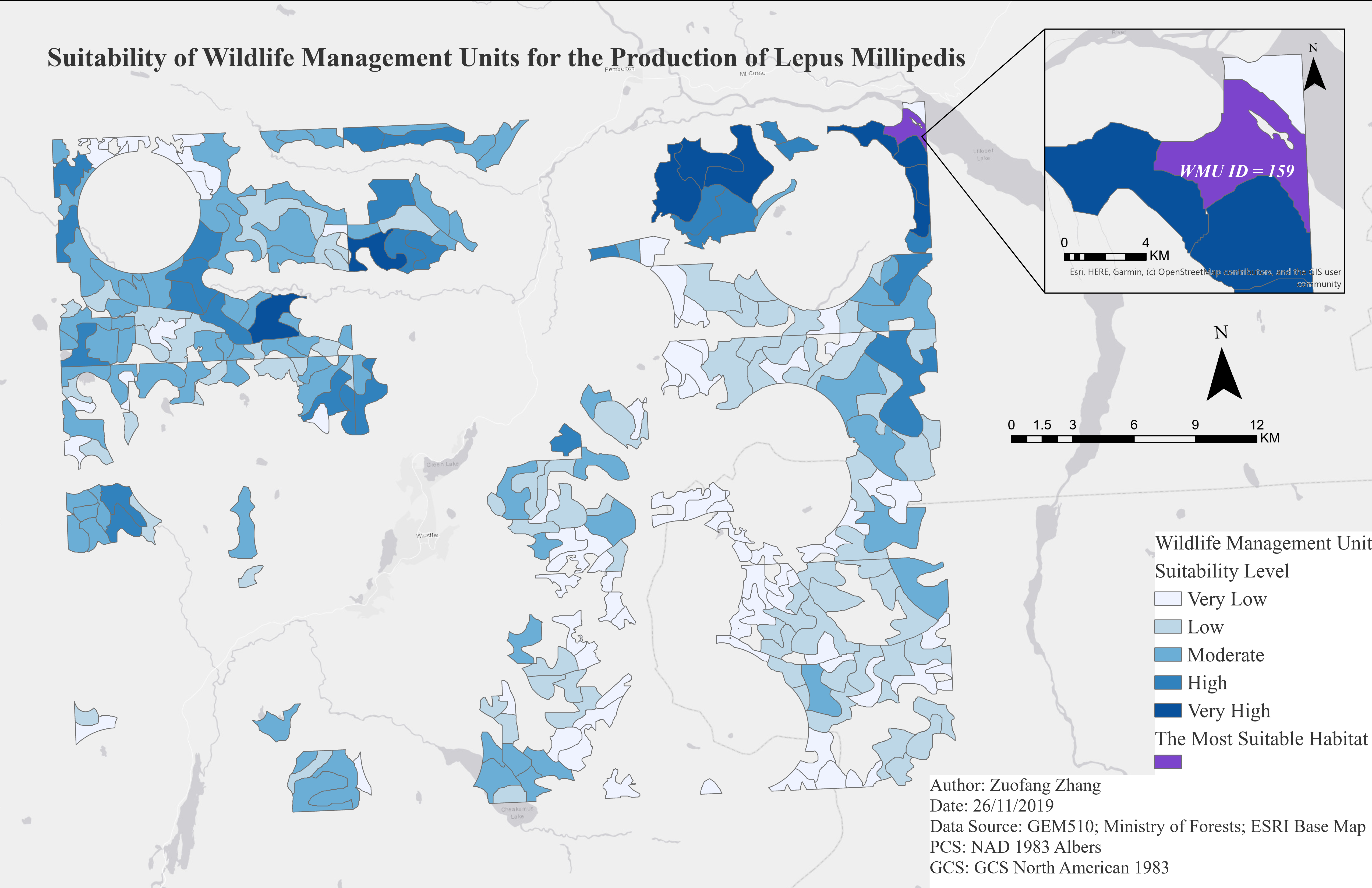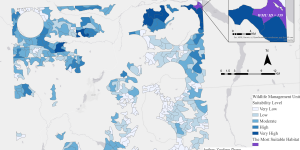The capability model identifies areas that can support the production of l.millipedis. The output uses a binary classification where the capable areas are assigned a 1 while the remaining areas that cannot support the production are assigned a 0. The suitability model ranks the capable areas identified by the capability model based on their abilities in supporting the production of l.millipedis. The output is an ordinal classification with the most suitable area = 1 and the least suitable area = 0.
Environmental constraints of l.millipedis production:
- must not be within City/Town boundaries
- must be at least 2 km from paved roads and railways
- must be at least 500 m from non-paved roads and all bridges
- must contain a perennial water source
- must be on either crown forest management land or in the provincial park
- must be at least 3 km from major predators
- must not be located on a glacier
- must have at management unit of at least ½km

